White Tiles with Black Grout: 2025 Design Guide
Imagine your bathroom glowing in crisp white, each line sharply defined by jet-black grout—a minimalist’s dream with a bold twist. This graphic, high-contrast look is more than just a passing trend; it’s a powerful design statement. But does this timeless contrast work for every home? And how do you get it right?
Yes, white tiles with black grout are a strong design choice for 2025 and beyond. This combination creates a striking visual that highlights tile patterns, adds depth, and anchors a space. It works especially well in modern, minimalist, Scandinavian, and industrial designs, offering a look that is both clean and dramatic. The key to success is balancing the contrast with other design elements.
For years, we've seen this look bubble up in design-forward cafes and boutique hotels. Now, it's making a definitive move into our homes. According to Pinterest's 2025 trend forecasts, searches for "contrast grout lines" and "graphic interiors" are on the rise, signaling a shift away from subtle, monochromatic palettes.
But we understand the hesitation. You worry if the look might feel too harsh, or worse, become dated in a few years. You want a space that feels both personal and enduring. This guide is your source of truth. We’ll share designer insights, practical pros and cons, and essential maintenance tips. By the end, you’ll have the confidence to decide if this bold look is the perfect choice for your kitchen or bathroom.
The Rise of Contrast Tile Design in 2025
For decades, grout was purely functional—a necessary filler meant to be invisible. Designers often specified grout colors that matched the tile to create a seamless, uniform surface. The goal was for the grout to disappear, letting the tile itself be the star.
Then, the minimalist and Scandinavian design movements gained incredible momentum. These styles celebrate clean lines, simple forms, and functional beauty. Suddenly, the grid created by grout lines wasn't something to hide; it was an opportunity. Black grout on white tile became the perfect way to emphasize geometry and add graphic impact without introducing clutter.
Looking toward 2025, this isn't just about minimalism anymore. We're seeing what the industry calls "intentional contrast." It's about creating visual balance and structure in a room. As the 2024 Houzz & Home Study notes, homeowners are seeking "defined and functional" spaces. Black grout provides that definition, acting like the clean, sharp lines of an architectural drawing.
From Utility to Art Form
Think of black grout as the eyeliner for your tiles. It makes the shape of each tile—whether it's a simple subway, a playful hexagon, or an intricate penny tile—pop. This technique transforms a simple, affordable material like white ceramic tile into a dynamic, patterned wall or floor. It’s a designer trick for achieving high impact on a reasonable budget.
Why It Feels So Right for Now
In a world of visual noise, our homes are becoming sanctuaries of calm and order. The clean, graphic quality of a black-and-white tile grid feels incredibly orderly and satisfying. It’s a design choice that is both bold and serene, which is why we’re confident it will continue to dominate bathrooms and kitchen backsplashes well into 2025 and beyond.

Design Inspirations: Pairing White Tiles with Black Grout
The magic of this combination lies in the details. The shape, finish, and layout of your white tiles will completely change the effect of the black grout. Let's break down how to get it right.
Which Tile Shapes Work Best?
Different tile shapes create a unique visual rhythm.
-
Classic Subway Tiles: This is the most popular choice for a reason. Arranged in a traditional brick pattern, it feels timeless and clean. For a more modern twist, consider a vertical stack or a herringbone layout. These patterns draw the eye upward and add dynamic energy.
-
Hexagon Tiles: A favorite for bathroom floors, white hexagons with black grout create a honeycomb effect that is playful yet sophisticated. It feels modern and a bit retro at the same time, offering a fantastic graphic floor that hides daily dust and debris.
-
Square Tiles: Don't underestimate the simple square. A grid of small white squares with black grout gives a nostalgic, almost utilitarian feel that works beautifully in both modern farmhouse and minimalist Japandi designs. It’s honest and unpretentious.
-
Penny Tiles: Tiny, round penny tiles create a detailed, textural look. The high density of grout lines makes for a non-slip surface, perfect for shower floors. The effect is intricate and visually engaging.

Matte vs. Glossy: What's the Right Finish?
The finish of your tile dramatically impacts the final look.
- Glossy Tiles: A glossy finish reflects light, making a space feel brighter and larger. The shine contrasts beautifully with the flat, matte texture of the grout. This is a great choice for a kitchen backsplash or a small bathroom where you want to maximize light.
- Matte Tiles: Matte tiles absorb light, creating a softer, more modern and organic feel. A matte white tile with black grout is the epitome of understated cool. In our experience, this finish is more forgiving, as it's less likely to show water spots and fingerprints.
Where to Find More Pattern Inspiration
Laying tiles is both a science and an art. The pattern you choose can make or break the design. For those considering the classic subway tile, exploring different layouts is a must.
To elevate your design from standard to stunning, mastering the tile layout is essential. For a deep dive into creative options beyond the traditional offset, explore our visual guide on How to Use Trendy Subway Tile Patterns. It’s packed with examples that will spark your creativity.
What Are the Pros and Cons of Using Black Grout?
Like any design choice, this one comes with its own set of practical considerations. Understanding them upfront is the key to a successful project. We've seen hundreds of clients weigh these factors, and here's the straightforward breakdown.
Pros of Black Grout
- Hides Dirt & Stains: Black grout is fantastic at camouflaging everyday dirt, mildew, and stains that would be glaringly obvious on white grout. This makes it a practical choice for high-traffic areas.
- Creates Dramatic Contrast: It makes white tiles pop, highlighting their shape and pattern. This adds architectural interest and a graphic, designer feel to any room.
- Feels Modern & Timeless: The look is rooted in early 20th-century design (think classic subway stations) but feels completely current. It’s a trend with historical legs.
- Adds Visual Depth: The dark lines create a sense of depth and dimension, preventing a white-tiled room from feeling flat or sterile.
Cons of Black Grout
- Can Fade Over Time: If not properly sealed and maintained, or if exposed to harsh chemicals and direct sunlight, black grout can fade to a less attractive charcoal gray.
- Shows Mineral Deposits: In areas with hard water, white mineral deposits (efflorescence) can be more visible on black grout than on lighter colors.
- Application is Less Forgiving: Any mistakes during application, like smearing the black pigment onto the porous edges of unglazed white tile, can be very difficult to clean up.
- Can Feel Visually Heavy: In a very small, poorly lit space, a dense grid of black lines could potentially make the room feel smaller or busier if not balanced with other light elements.
The Verdict from Experience
The most common mistake we see is people choosing black grout for the wrong reasons. Don't choose it just because it's trendy; choose it because you love the graphic, defined look it creates. If your top priority is a bright, seamless, and airy feel, a light gray or white grout might be a better fit.
But if you want to add character and a touch of drama, the benefits of black grout far outweigh the cons, especially with a good maintenance routine.

How Do You Care for and Maintain Black Grout?
The beauty of black grout is its drama; the key to its longevity is proper care. A common myth is that it's "no maintenance." While it is low-maintenance, a little effort goes a long way in keeping it a true, deep black.

The Golden Rule: Sealing is Non-Negotiable
This is the single most important step. A high-quality penetrating grout sealer creates an invisible barrier that protects the porous grout from moisture, stains, and—most importantly—fading.
- Pro-Tip: Seal your grout about 72 hours after it has fully cured. Then, reseal it every 1-2 years, or yearly in a high-moisture area like a shower. This 15-minute task will save you years of potential discoloration.
How to Clean Black Grout on White Tiles
Harsh chemicals are the enemy of black grout. Bleach-based cleaners will strip the color pigment, causing it to fade prematurely. Instead, opt for gentle, effective solutions.
- Start with the Basics: For regular cleaning, a simple mixture of warm water and a few drops of pH-neutral dish soap is all you need. Use a soft-bristle brush (an old toothbrush works great) to gently scrub the grout lines.
- For Deeper Cleaning: Mix equal parts water and white vinegar in a spray bottle. Spray it on the grout, let it sit for 5-10 minutes, and then scrub. The mild acidity of the vinegar is excellent for breaking down soap scum and mineral deposits.
- Rinse Thoroughly: After cleaning, always rinse the area with plain water to remove any cleaning solution residue, which can attract more dirt.
Your Go-To Cleaning Resource
Navigating the world of sealers and cleaners can be confusing. To simplify it, we’ve put all our top recommendations and step-by-step guides in one place.
To protect your investment and keep your tiles looking pristine, it's crucial to use the right products. Our comprehensive guide, How to Clean White Subway Tile with Black Grout, offers a definitive list of tested products and techniques to prevent fading and ensure lasting beauty.
How Can You Apply and Match Black Grout Correctly?
Applying black grout is not harder than applying light-colored grout, but it is less forgiving. The dark pigment can easily stain porous surfaces, so precision and preparation are your best friends. Here’s how we guide our own clients through the process.
Step 1: Prepare Your Surface
Before you even mix the grout, clean your tile surfaces meticulously. Make sure all thin-set mortar is scraped out from between the tiles and that the tiles themselves are free of dust and debris. This ensures a clean bond.
Step 2: Choose the Right Grout Type
For most DIY projects, we recommend a high-performance, stain-resistant cementitious grout. Look for brands that offer "color-consistent" formulas. These are designed to prevent blotchiness as the grout dries, ensuring a uniform, deep black.
- Pro-Tip: Epoxy grout is another option. It's virtually stain-proof and never needs sealing. However, it sets very quickly and can be difficult for first-time DIYers to work with. If you're a beginner, stick with a premium cement-based grout.
Step 3: The Application Process
Mix the grout according to the manufacturer's instructions until it has a consistency like smooth peanut butter.
- Work in Small Sections: Apply the grout diagonally across the tiles using a rubber grout float. Working in a 3x3 foot section at a time prevents the grout from drying before you can clean it.
- Press Firmly: Make sure you press the grout firmly into the joints to eliminate any air pockets.
- Initial Cleanup: After about 15-20 minutes, use a damp (not soaking wet) grout sponge to wipe away the excess grout from the tile surface. Again, wipe diagonally to avoid pulling grout out of the joints.
Step 4: Avoiding the Dreaded Grout Haze
The biggest rookie mistake is leaving a "haze" of black pigment on the white tiles. After your initial cleanup, a faint film will likely dry on the tile. Do not panic.
Wait about 2-3 hours, then use a clean, dry microfiber cloth to buff the haze off the tiles. If it’s stubborn, a specialty grout haze remover can be used, but always test it on a spare tile first.
For an easier path to this stunning look, especially on backsplashes, peel-and-stick alternatives offer a revolutionary, mess-free solution. Our What Kitchen Backsplash Tile Guide explores these user-friendly options, helping you decide between traditional tile and modern peel-and-stick convenience.
What Is the Trend Forecast for Tile and Grout in 2025?
While the black-and-white combination remains a pillar of modern design, the idea of "contrast grout" has opened the door to a whole new world of color. For 2025, we're seeing a move toward rich, earthy, and unexpected grout colors.
The New Contrast Colors
- Earthy Tones: Think terracotta, olive green, and warm beige. Paired with creamy white or zellige-style tiles, these grout colors create a look that is organic, warm, and deeply sophisticated. It’s a softer, more bohemian take on the contrast trend.
- Deep Jewel Tones: For those who love drama, deep navy blue or emerald green grout is emerging as a bold choice. We're seeing this in powder rooms and on accent walls, where it adds a dose of unexpected luxury.
- Warm Metallics: Champagne and bronze "grouts" (often achieved with specialty epoxy additives) are being used with large-format marble-look tiles to create a seamless, glamorous look in high-end bathrooms.
The Rise of Sustainable Materials
The conversation around tile in 2025 isn't just about color; it's about materials. There is a growing demand for tiles made from recycled content and grouts with low-VOC (Volatile Organic Compound) formulas. Brands are responding with eco-friendly options that don't compromise on performance or aesthetics. This aligns with the broader "wellness at home" movement, where creating a healthy indoor environment is as important as the design itself.
As one designer noted in a recent *Architectural Digest* feature, "The future of surface design is where beauty meets responsibility." We predict this will lead to more texture, more natural colors, and smarter materials in the year ahead.
What Are Some Expert Tips for Balancing Boldness and Minimalism?
The secret to making any bold design choice work is balance. With white tiles and black grout, you're starting with a strong graphic element. The next step is to soften and contextualize it.
Use It as an Accent
You don't have to commit to tiling every wall. In a small bathroom, consider using the contrast tile on a single feature wall, like the one behind the vanity or inside the shower. This creates a powerful focal point without overwhelming the senses. The remaining walls can be painted a soft white or light gray to keep the space feeling open.
Even a small change can have a huge impact. For a truly transformative yet manageable project, our Subway Tile Shower Makeover Guide provides step-by-step instructions and inspiration for creating a stunning feature in your bathroom.
Introduce Warmth with Textures
A black-and-white palette can feel stark if it's not balanced with natural textures. This is where Japandi (a hybrid of Japanese and Scandinavian design) offers valuable lessons.
- Wood Tones: Introduce a light oak or walnut vanity, wooden shelves, or a teak shower mat. The natural grain and warmth of the wood provide a perfect counterpoint to the graphic tile.
- Metallic Finishes: Brushed brass or matte black fixtures (faucets, showerheads, lighting) add a layer of metallic warmth and sophistication.
- Lush Greenery: Never underestimate the power of a simple plant. A bit of green adds life, color, and organic shape to a structured space.
Let It Be the Star
If you have a beautiful, graphic floor of hexagon or penny tiles, let that be the main event. Keep the other elements in the room simple. A pedestal sink, a frameless glass shower door, and minimal decor will allow the tile pattern to truly shine. For smaller updates, consider a peel-and-stick accent wall. Our guide to Modern Peel and Stick Tiles shows how to do this effectively.
Which Contrast Design Fits Your Home?
1. When it comes to home decor, your motto is:
2. Pick a fixture finish:
What Are Some Affordable Ways to Refresh with Black Grout?
Achieving a high-impact design refresh doesn't require a full demolition. If you already have white tiles, you're halfway there. Even small, targeted updates can completely transform the feel of your space.
The Power of Regrouting
If your existing white tiles are in good shape, but the grout is tired and stained, you have a golden opportunity. Carefully scraping out the old grout and applying fresh black grout is a project that can be done in a weekend for a fraction of the cost of retiling. It’s the single most effective, budget-friendly way to embrace this trend.
The Magic of Peel-and-Stick Tiles
For renters or those looking for a quick, reversible solution, modern peel-and-stick tiles are a game-changer. The quality has improved immensely, with many products offering realistic textures and built-in "grout" lines. They are perfect for a kitchen backsplash or a bathroom accent wall.
These tiles are designed for moist environments and offer a durable, easy-to-clean surface. This is by far the easiest entry point into the trend. If you're concerned about using them in a bathroom, rest assured that modern options are designed for durability. Find inspiration and guidance in our article on using Peel Stick Bathroom Tile for Moisture.
To see the truly stunning results you can achieve, don't miss our gallery of before-and-after projects. This is the best resource for visualizing the potential: How to Transform Your Bathroom with Peel and Stick Tiles 2025.
Create a Small but Mighty Moment
You don't need to tile a whole room. Think smaller.
- Kitchen Backsplash: A new backsplash is a relatively small area that delivers huge visual rewards. Our Subway Tile Backsplash with Black Grout: 2025 Guide walks you through planning this specific project.
- Shower Niche: Tile the inside of your shower niche with a white tile and black grout combo. It's a small detail that feels custom and luxurious.
- Bathroom Floor: A bathroom floor is often a smaller, more manageable project than wall tiling. It can completely anchor the design of the entire room.
Your Path to Confident Contrast
The decision to use white tiles with black grout is a move toward a more defined, graphic, and intentional home. It's a choice that feels both classic and perfectly in tune with the design direction of 2025. By highlighting form and embracing contrast, you can create a space that is clean, dramatic, and full of character.
Remember to balance the boldness with warm textures and natural materials. Start small if you're feeling hesitant—a backsplash or a feature wall can be the perfect experiment. More than just a trend, this is a versatile design tool that, when used thoughtfully, creates a space that is truly timeless.
Ready to explore more? Browse our inspirational galleries or sign up for our newsletter to get the latest 2025 trend reports and designer tips delivered directly to you.
Frequently Asked Questions
Will black grout make my small bathroom look smaller?
Not necessarily. While dark colors can sometimes enclose a space, the bright white of the tiles reflects light. The black lines create depth and can even trick the eye. To maximize the sense of space, use a larger tile format (fewer grout lines) and ensure the room is well-lit.
How hard is it to change grout color later on?
Changing grout color is possible but labor-intensive. It involves scraping out the old grout with a specialized tool before applying a new color. It's much easier to get the color right the first time, which is why sealing black grout to prevent fading is so important.
Can I use black grout with natural stone tiles like marble?
We strongly advise against it. Natural stone is porous, and the black pigment from the grout can easily bleed into the stone, causing permanent staining. This look is best reserved for non-porous materials like ceramic and porcelain.
Is black epoxy grout better than regular grout?
Epoxy grout is a premium choice. It's more durable, waterproof, and stain-proof, and it never needs to be sealed. However, it's more expensive and much more difficult to work with for a DIYer due to its fast setting time. For most home projects, a high-quality cementitious grout is more than sufficient.

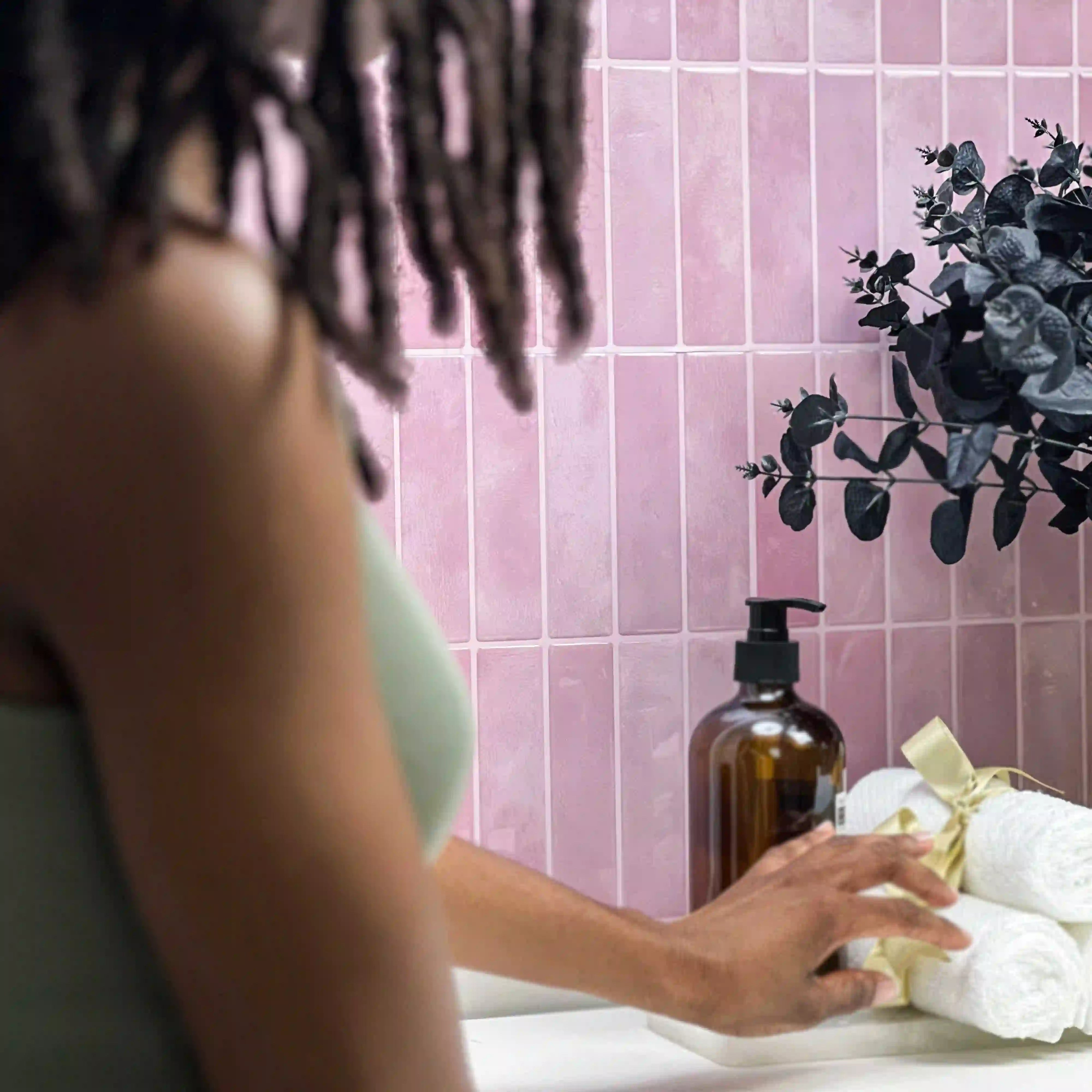
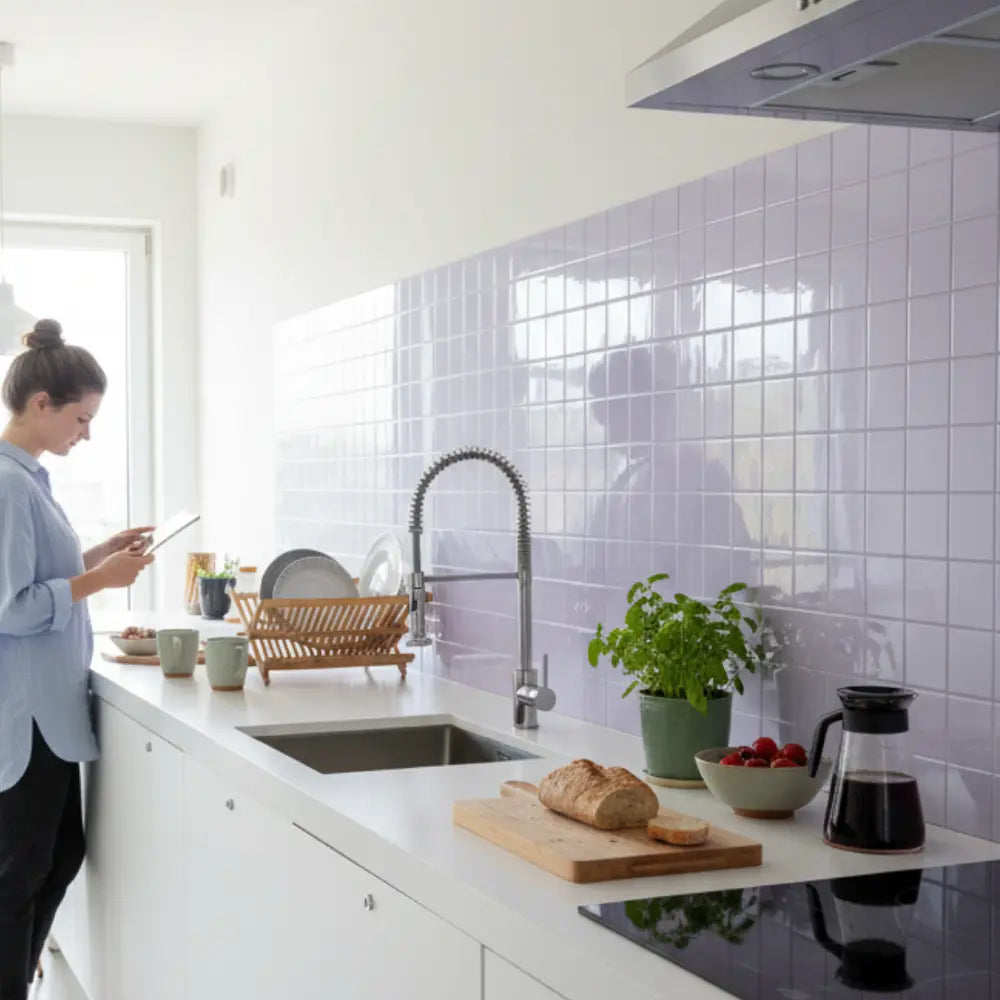
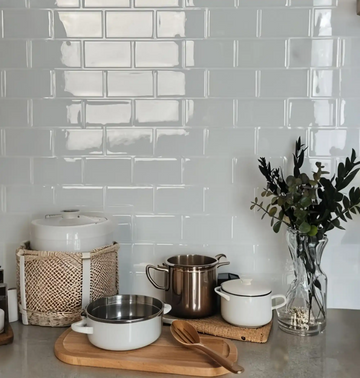
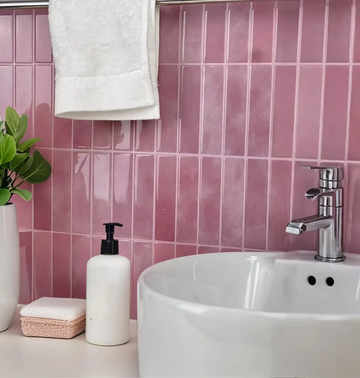
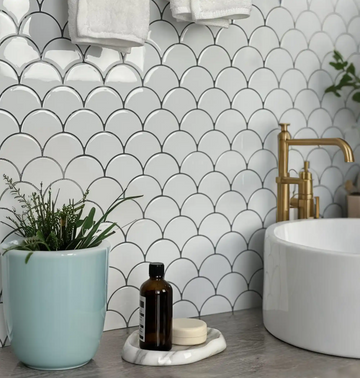
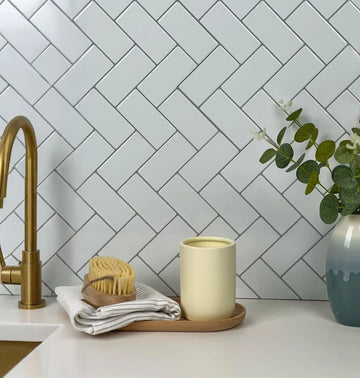


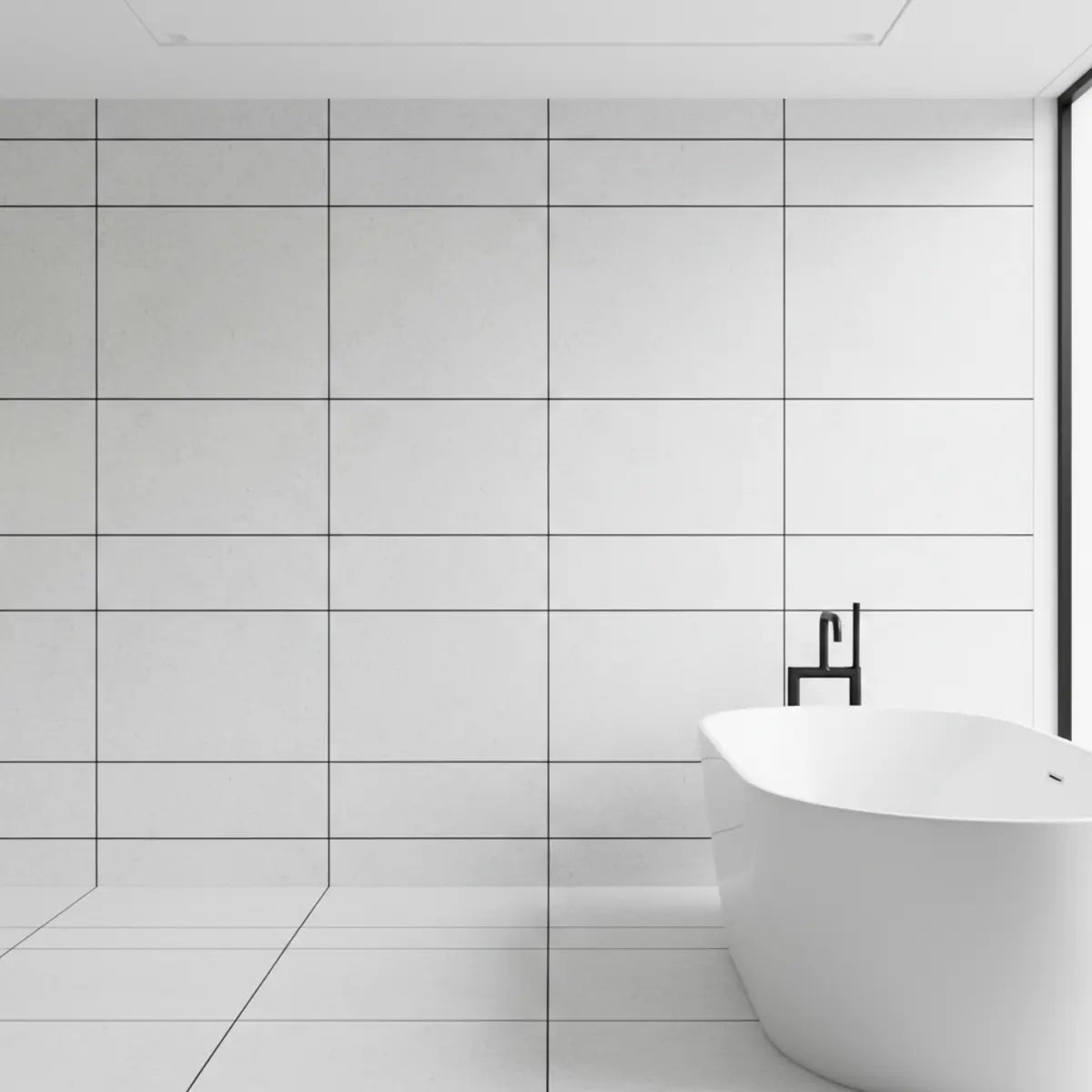
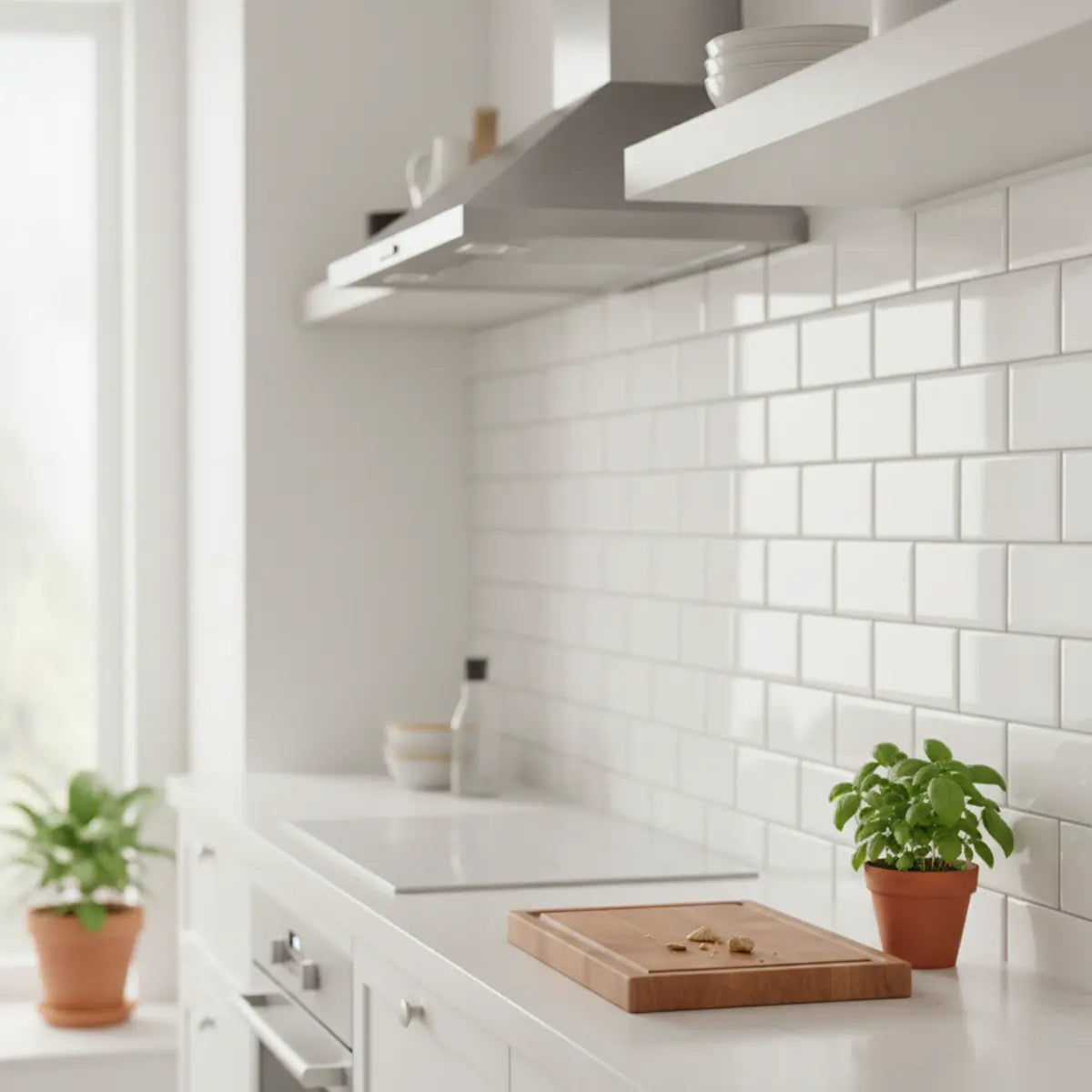

Dejar un comentario
Este sitio está protegido por hCaptcha y se aplican la Política de privacidad de hCaptcha y los Términos del servicio.